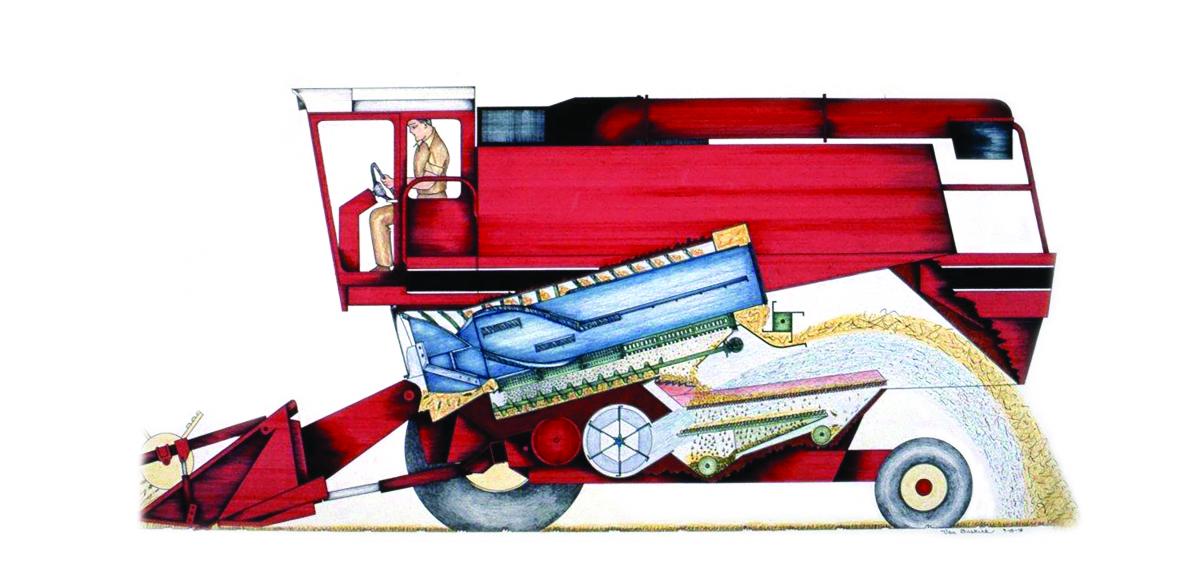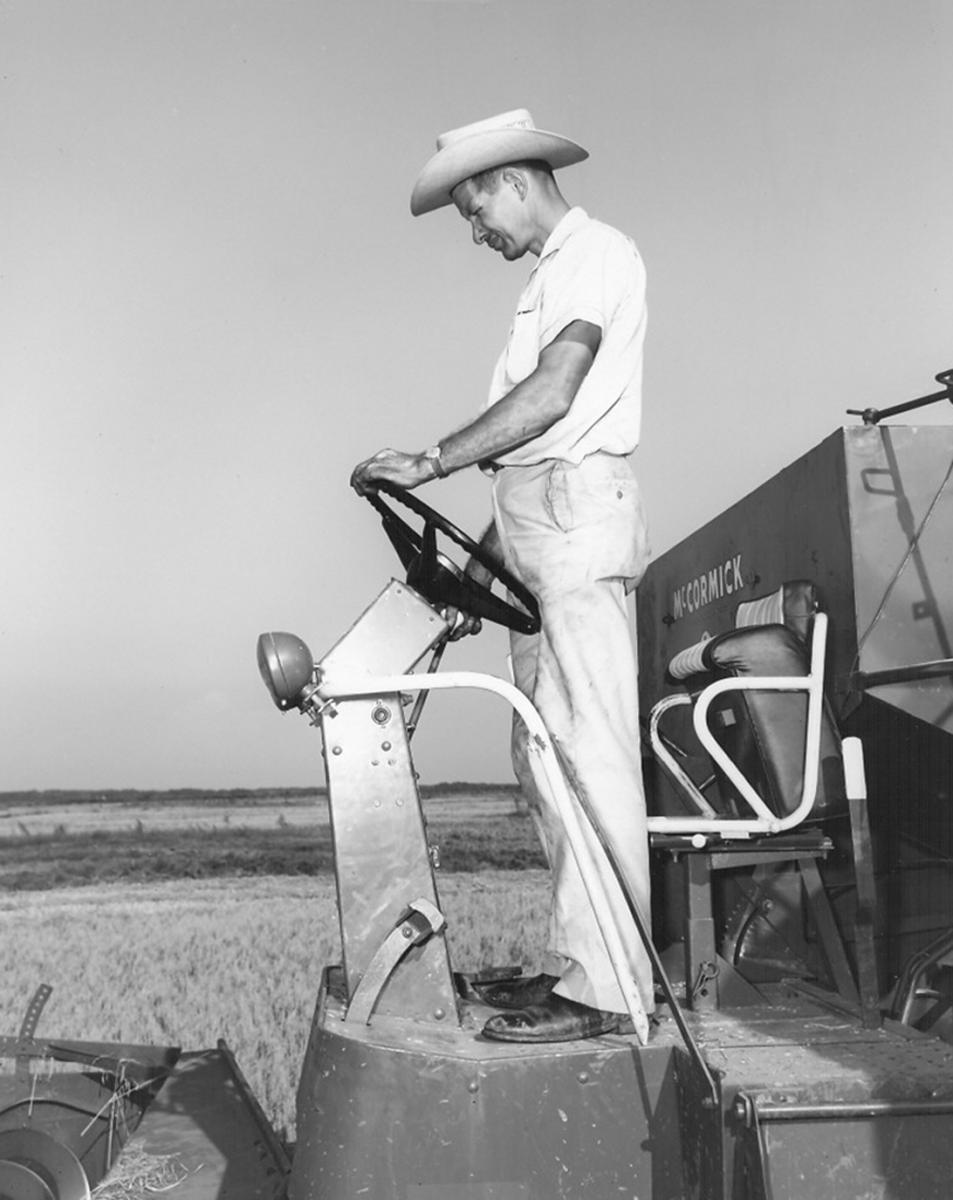Red Demon

When the Axial-Flow combine was introduced to the world in 1977, International Harvester took a leap ahead of the competition. While New Holland also had a rotary combine on the market, it simply wasn’t as effective or well-marketed as the IH version.
Harvester was out in front, and they made the most of the situation.
On June 2, 1977, the Harvester team hosted an event they called the “Quad Cities 300.” All the regional sales managers and other marketing staff were invited to East Moline for two days of tours and familiarization with the new Axial-Flow combine. The engineers gave presentations.
Murray spoke about the development of the machine at the Society of Automotive Engineers Off-Highway Vehicle Meeting in Milwaukee on September 12 to 15. He and Dick DePauw, Jim Francis, and Ken Johnson presented the same information to the ASAE International Grain and Forage Harvesting conference in Ames, Iowa, a few weeks later.
The same month, the press was brought in for a grand presentation, as well. “Unfortunately it was drizzling rain during the field work but in true Axial-Flow form we harvested corn very satisfactorily anyway,” Murray wrote.
The reaction to the Axial-Flow was phenomenal. Murray kept a log of 32 articles on the new machine. Machine Design magazine did a cover story about them. Farm Chemical Companies used photos of 1440s and 1460s in their advertising.
The wave of good press put the competition on edge. Deere and Massey produced technical rebuttals saying that they would have axial flow technology if it was superior to their existing systems.
In reality, both were working feverishly to develop an axial-flow system.
New Holland, for their part, touted their allegedly superior twin-rotor machine.
At the 1977 Farm Progress Show in Washington, Iowa, the competition had a chance to match up head-to-head. Cam Beert, Harvester’s most senior product man, was running the Axial-Flow. In fact, he was the company’s first choice. His job was to travel all over the world, helping customers and dealers get the most of their machines. Beert understood the problems customers were having and would move heaven and earth to see their issues dealt with. He was legendary for calling engineers or management and telling them that a customer was expecting a call in a few minutes.
This didn’t make him the most popular guy in the company. But the fact that he could do this strongly illustrates the combine group’s customer focus at the time.
Beert was also a bit of skeptic early on. He had been running conventional combines since the 1940s.
“When we went rotary, I thought we were nuts,” Beert said.
One of the first times he operated the new machine was at the 1977 Farm Progress Show. The conditions were awful. “Muddier than bloody hell,” Beert said. “We just couldn’t get very far because it was muddy.”
Beert recalls asking vice president Marv Whipple to go get him some rice tires so they could run in the mud.
“Are you crazy?” Whipple responded. “I’m not your errand boy!”
After some discussion, the big tires were shipped to the show and mounted.
They worked perfectly. Despite the mud, the Axial-Flow harvested corn with flair. Whipple quickly figured out how to set up the machine, and its performance was outstanding.
The John Deere got stuck.
At the time, the agricultural companies at the show used radios to communicate with drivers. One of the Harvester guys, Ralph, had figured out how to listen in on the Deere guys. At one point, he gave the radio to Beert, saying,
“You may want to listen to this.”
“The Red Demon is climbing up on us!” said a Deere guy. “Go faster.”
“It can’t go faster,” the operator responded. “I’ll plug this thing!”
“Go faster!” the Deere guy said.
They plugged it.
After that, the Deere operators were instructed to stay away from the “Red Demon.”
The Red Demon got the better of the Deere that day—and many more.
Regular production of the International Harvester Axial-Flow combine was authorized to begin in March 1978, and East Moline plant manager Matt Glowgowski decided the time had come to celebrate. “With all the staff wearing red blazers, Matt triumphantly drove the combine through a huge paper banner and all applauded,” Murray wrote. “Morale was high throughout the entire factory.”
The same could be said for the entire Harvester organization.
Elof’s obstinate vision had survived long enough for the next generation to pick up the change. Don Murray’s team made the Axial-Flow combine work so efficiently that the rest of the industry would be playing catchup for a long time.
The Red Demon had trumped the rest of the colors.

